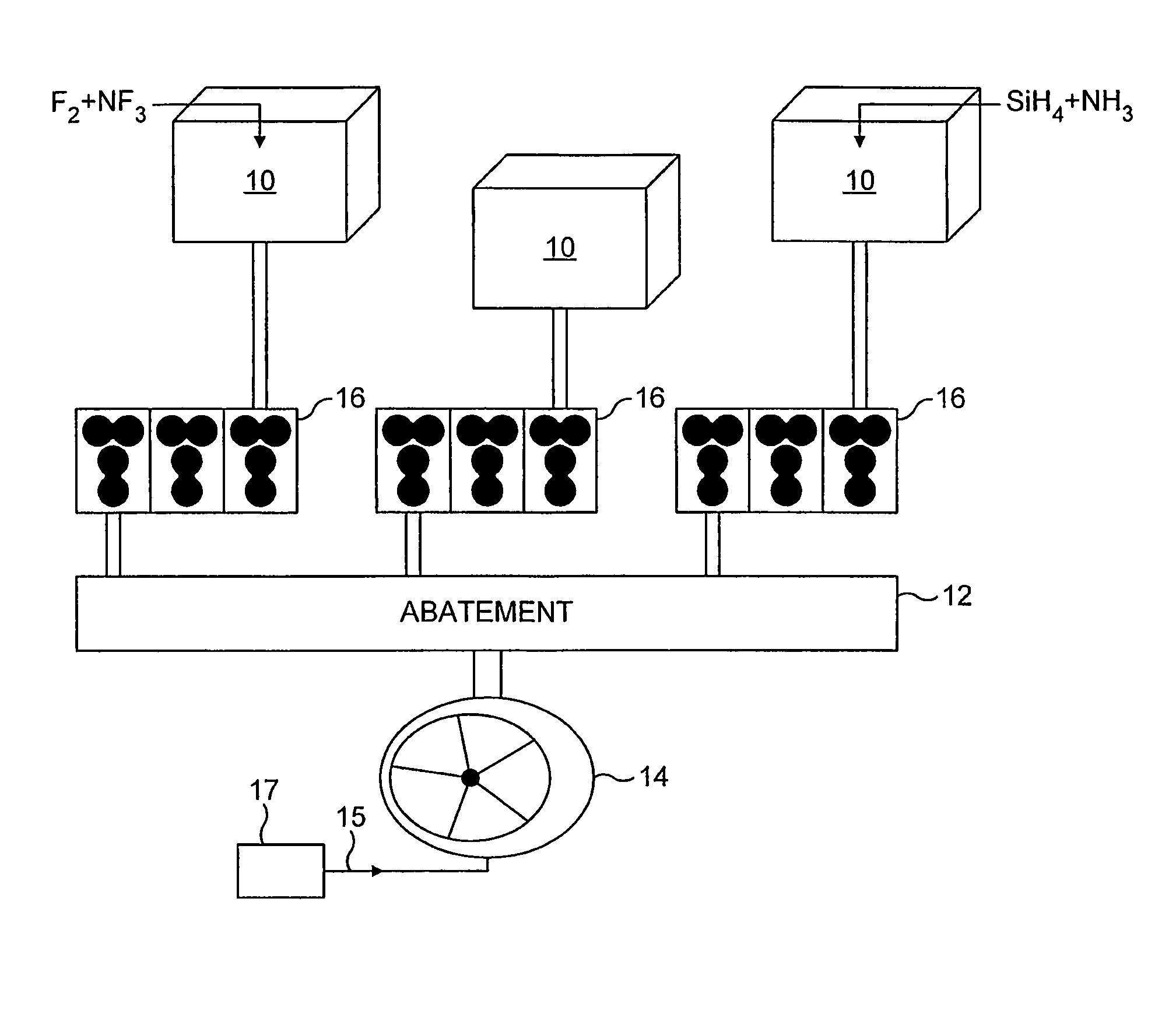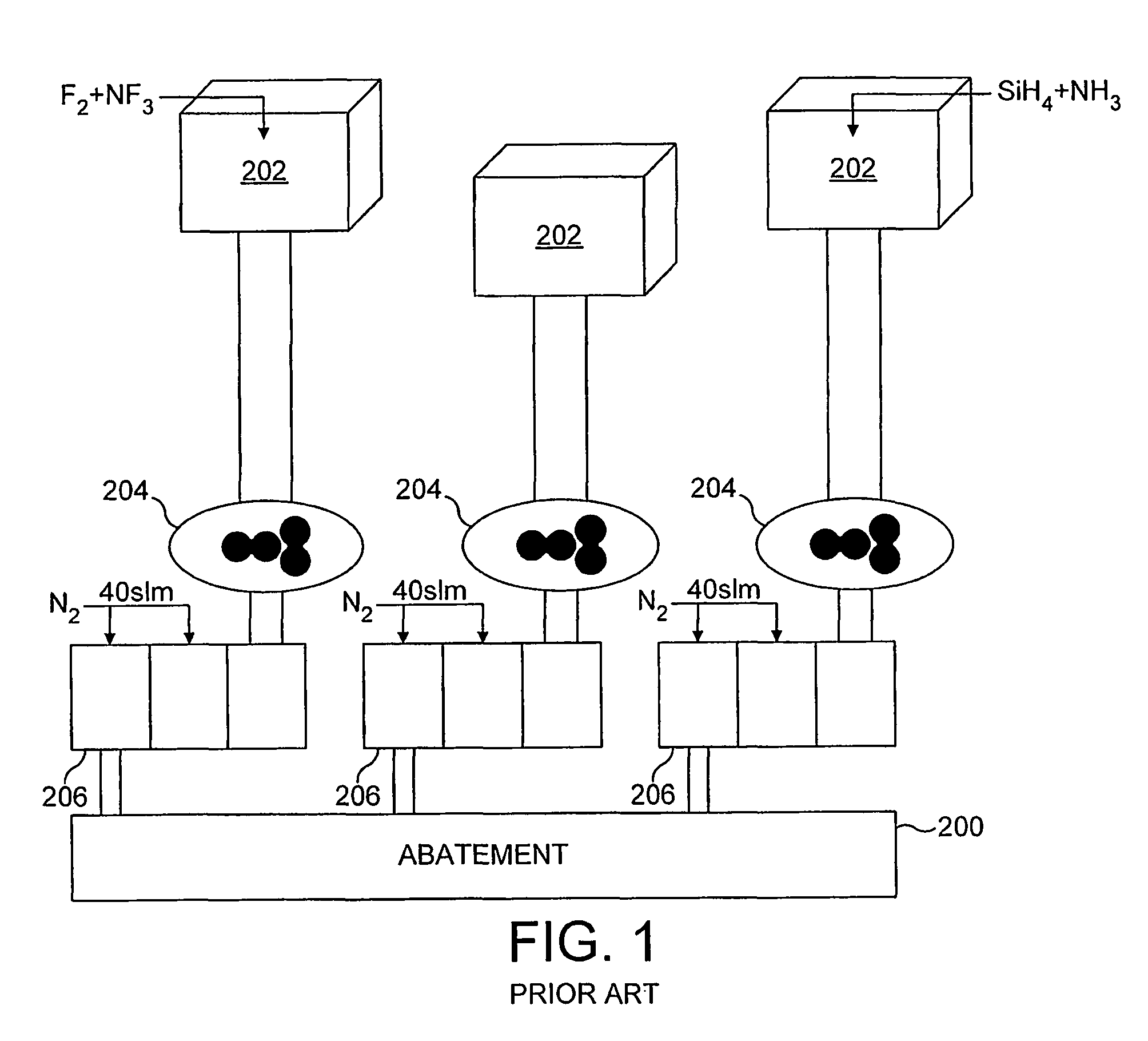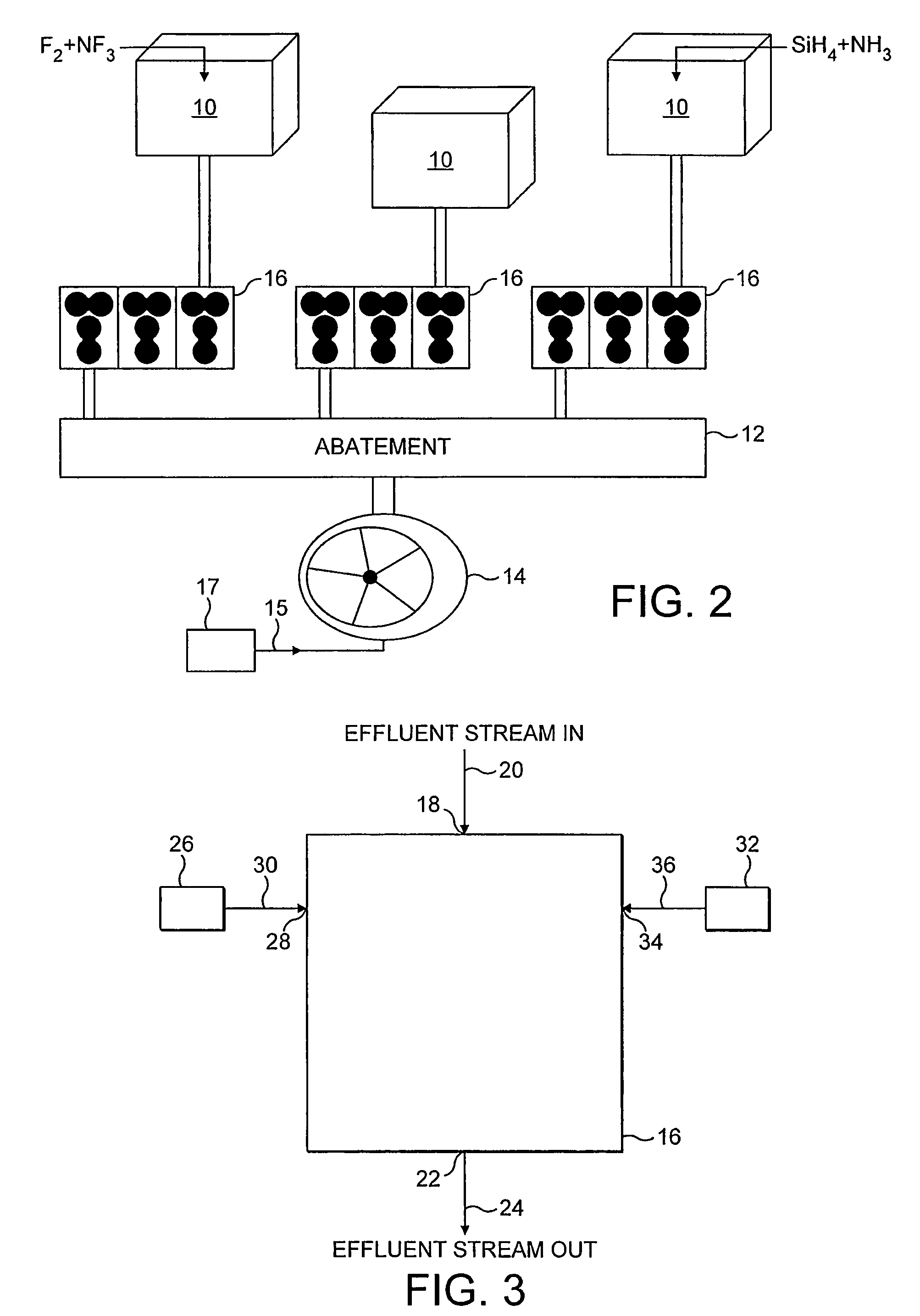Gas abatement
a technology of gas abatement and absorption chamber, which is applied in the direction of machine/engine, lighting and heating apparatus, separation processes, etc., can solve the problems of undesirable environmental release, difficult removal of pfcs from effluent, etc., and achieves the effect of reducing the amount of pfcs, and increasing the efficiency of waste stream treatmen
- Summary
- Abstract
- Description
- Claims
- Application Information
AI Technical Summary
Benefits of technology
Problems solved by technology
Method used
Image
Examples
example 1
[0052]The reactive fluid is a source of H+ and OH− ions, for example, water vapour, and the effluent stream contains a perfluorocompound, for example, CF4. The plasma flame dissociates the water vapour into H+ and OH− ions:
H2O→H++OH− (1)
which react with CF4 to form carbon dioxide and HF as by-products:
CF4+2OH−+2H+→CO2+4HF (2)
[0053]A typical gas mixture for performing a dielectric etch in a process tool may contain differing proportions of the gases CHF3, C3F8, C4F8 or other perfluorinated or hydrofluorocarbon gas, but the chemical reactions of the H+ and OH− ions with these components of the waste gas stream will differ in detail but the general form will be as the scheme above.
example 2
[0054]The reactive fluid is again a source of H+ and OH″ ions, for example, water vapour, and the waste stream contains NF3. Process tool manufacturers are increasingly adopting NF3 as the chamber cleaning gas of choice for PECVD reactors. Whereas the utilisation of NF3 by the cleaning process is much higher than that of either CF4 or C2F6, the by-products produced are considerably more reactive and their uncontrolled release is potentially very dangerous. Within the plasma, NF3 dissociates to form N2, F2 and N2F4:
4NF3→N2+4F2+N2F4 (3)
with the N2F4 component of the effluent stream subsequently reacting with the H+ and OH− ions generated from the impingement of the water vapour on the plasma flare:
N2F4+2H++2OH−→N2+4HF+O2 (4)
[0055]As illustrated by the above examples, the same ions may be used to remove various different components from a gas stream. Consequently, the abatement device is suitable to receive a plurality of gas streams, either from similar or different process tools, a...
PUM
| Property | Measurement | Unit |
|---|---|---|
| Pressure | aaaaa | aaaaa |
| Solubility (mass) | aaaaa | aaaaa |
Abstract
Description
Claims
Application Information
 Login to View More
Login to View More - R&D
- Intellectual Property
- Life Sciences
- Materials
- Tech Scout
- Unparalleled Data Quality
- Higher Quality Content
- 60% Fewer Hallucinations
Browse by: Latest US Patents, China's latest patents, Technical Efficacy Thesaurus, Application Domain, Technology Topic, Popular Technical Reports.
© 2025 PatSnap. All rights reserved.Legal|Privacy policy|Modern Slavery Act Transparency Statement|Sitemap|About US| Contact US: help@patsnap.com



